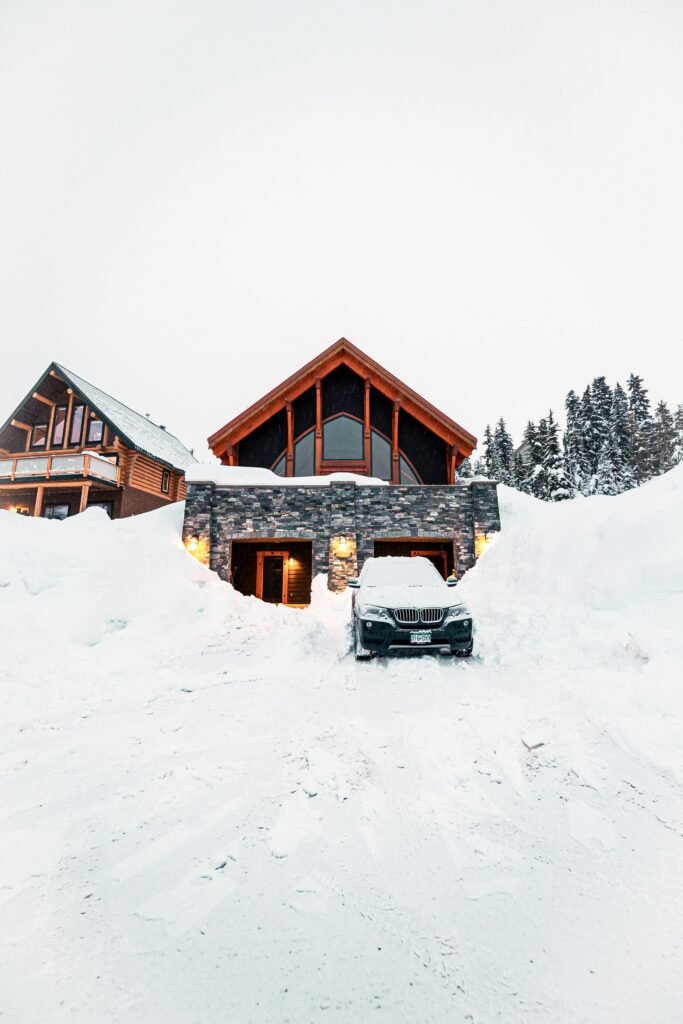What Happens When Your Driveway Fails? Cost and Repair Options
For many new homeowners, maintaining a property’s exterior can be one of the biggest surprises—and your driveway is no exception.
Cracks, sinking spots, and crumbling edges might seem like minor issues, but they can signal deeper structural problems that affect your home’s value and safety.
Understanding what happens when your driveway starts to fail is one of those crucial first-time homeowner lessons that can save you thousands of dollars in the long run.
Whether you have concrete, asphalt, or pavers, every driveway has a lifespan.
In this guide, we’ll explore why driveways fail, what repairs cost, and when replacement might be the better investment.
Recognizing Driveway Failure: Key Signs to Watch For
As a homeowner, it’s important to spot early signs of driveway damage before they worsen. Driveway deterioration often starts subtly, then accelerates as water, temperature changes, and everyday use take their toll.
Here are the most common signs that your driveway may be failing:
- Cracks and fissures: Hairline cracks often appear first but can widen with freeze-thaw cycles or heavy vehicles.
- Pooling water: Water that doesn’t drain properly can seep beneath the surface, weakening the base layer.
- Uneven or sunken areas: Indicates settling soil or erosion beneath the driveway foundation.
- Potholes: A clear indicator of structural damage, especially in asphalt driveways.
- Fading and surface wear: UV rays and chemicals can break down materials, reducing their lifespan.
Ignoring these warning signs can lead to more extensive—and expensive—repairs later on. Learning to identify and respond early is one of the smartest first-time homeowner lessons you can master.

Common Causes of Driveway Damage
Understanding why your driveway fails is just as important as fixing it. Many problems stem from a combination of environmental factors and installation issues. Below are the main culprits:
- Poor drainage: Water trapped under or on the surface of the driveway weakens its base.
- Substandard materials or installation: Cheap materials or insufficient compaction can cause premature failure.
- Weather extremes: Freeze-thaw cycles, especially in colder climates, expand and contract surfaces, causing cracks.
- Heavy loads: Oversized vehicles or frequent traffic can stress the surface beyond its design limits.
- Tree roots: Nearby trees can push up or crack pavement as roots grow and expand.
Even with proper care, most driveways have an expected lifespan—typically 15–30 years, depending on material. Once your driveway starts to deteriorate beyond cosmetic issues, you’ll need to explore your repair and replacement options.

Driveway Repair Options and Average Costs
When facing driveway damage, homeowners often ask: “Can I fix this, or do I need to start over?” The answer depends on the extent of the damage, the driveway material, and your long-term plans for the home. Below are common repair methods and what you can expect to pay.
1. Crack Filling and Sealing
This is the simplest and most affordable repair option. Small cracks (less than ¼ inch wide) can be filled with asphalt or concrete sealant to prevent water infiltration and further damage.
- Cost: $0.50–$3 per linear foot
- Best for: Minor surface cracks in relatively new driveways
- Longevity: 3–5 years with proper maintenance
Sealing your driveway every few years also helps protect it from UV rays and moisture—an essential preventive measure for long-term durability.
2. Patching Potholes
Potholes are more serious and typically require patching to restore safety and aesthetics. Asphalt patches can be done as DIY projects, but professional repair ensures a longer-lasting fix.
- Cost: $100–$400 per pothole (depending on size and material)
- Best for: Isolated damage that hasn’t compromised the base
- Longevity: 2–7 years, depending on patch quality
This option can buy you time before a full resurfacing or replacement becomes necessary.
3. Resurfacing or Overlay
Resurfacing involves adding a new layer of asphalt or concrete over the existing surface. It’s ideal for driveways with moderate wear but a solid foundation underneath.
- Cost: $3–$10 per square foot
- Best for: Large areas with surface-level cracks or fading
- Longevity: 8–15 years
Resurfacing gives your driveway a fresh look and restores functionality without the cost of full replacement.
4. Slabjacking (Concrete Lifting)
When concrete driveways settle unevenly, slabjacking (or mudjacking) can restore balance by injecting material beneath the sunken slab. This lifts the surface without removing it entirely.
- Cost: $3–$7 per square foot
- Best for: Sunken concrete slabs caused by soil erosion or poor compaction
- Longevity: 5–10 years depending on soil stability
This option is more affordable and eco-friendly than replacement, especially when the underlying concrete is still in good condition.
5. Full Driveway Replacement
When your driveway has widespread cracks, drainage issues, or deep structural damage, replacement may be your only long-term solution. This process involves removing the old driveway, repairing the base, and installing new material.
- Cost:
- Asphalt: $5–$10 per square foot
- Concrete: $8–$15 per square foot
- Pavers: $10–$25 per square foot
- Best for: Severe structural failure or outdated driveways
- Longevity: 20–30 years with proper maintenance
Though it’s the most expensive option, replacement ensures a fresh start and can increase curb appeal—often recouping part of the cost in home value.

How Driveway Type Affects Maintenance and Longevity
Different materials perform differently under stress, temperature, and wear. Knowing what to expect helps homeowners plan for upkeep costs and replacement timelines.
| Driveway Type | Average Lifespan | Maintenance Needs | Common Issues |
|---|---|---|---|
| Asphalt | 15–25 years | Seal every 2–3 years | Cracks, potholes, fading |
| Concrete | 20–30 years | Joint sealing, cleaning | Cracking, staining, scaling |
| Pavers | 30–50 years | Weed control, re-sanding joints | Uneven settling, moss growth |
| Gravel | 10–20 years | Raking, regrading, adding gravel | Erosion, potholes, displacement |
DIY vs. Professional Repair: Which Is Best?
Some driveway issues—like small cracks or sealing—are manageable DIY tasks. But for larger repairs, professional expertise ensures the job lasts. Here’s a quick comparison:
DIY Repairs
- Lower cost and accessible for small fixes
- Good for patching cracks or filling potholes
- Requires time, tools, and some skill
Professional Repairs
- Higher upfront cost but better results
- Necessary for structural repairs or resurfacing
- Often comes with warranties or guarantees
For new homeowners, a mix of both approaches can be ideal: handle basic maintenance yourself but bring in professionals for major repairs or replacements.
Preventing Future Driveway Problems
Once your driveway is repaired or replaced, proper maintenance is key to maximizing its lifespan. Preventive care is one of the most valuable first-time homeowner lessons you can learn. Here’s how to keep your driveway in top shape:
- Seal regularly: Apply sealant every 2–3 years to protect against moisture and UV damage.
- Clean spills quickly: Oil and chemicals can stain and weaken surfaces.
- Ensure good drainage: Clear nearby gutters and direct runoff away from the driveway.
- Address cracks early: Small repairs prevent larger, costlier issues later.
- Avoid heavy loads: Limit parking large trucks or RVs on your driveway for extended periods.
Protect Your Investment with Smart Driveway Care
Your driveway plays a bigger role in your home’s safety, appearance, and value than you might think. When it starts to fail, timely repair—or replacement—can prevent bigger problems and protect your property’s foundation.
As one of the most important first-time homeowner lessons, understanding the signs of driveway failure and knowing your repair options empowers you to make informed decisions for your home’s future.
Thinking about repairing or upgrading your driveway? Contact a licensed contractor for an on-site assessment and quote. The sooner you act, the more you’ll save—keeping your home looking great and functioning safely for years to come.
Learn about more home maintenance tasks you can’t skip over.







